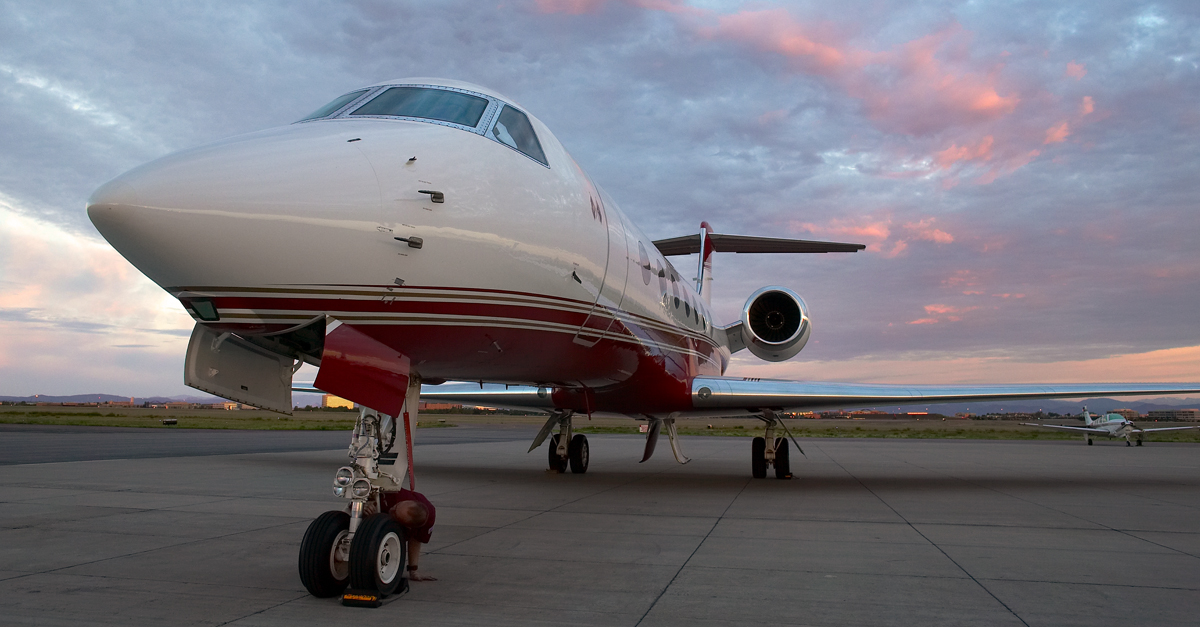
March 12, 2018
Whether you do it-in house, or hire a third party, planning is the key to a successful overseas trip.

“Regardless of whether trips are coordinated internally or through a trip planning organization, the overall responsibility remains with the operator,” says John Harpool, an industry veteran with 25 years of international trip planning and flight operations experience. “The mitigation of threats to safety and customer experience should shape the decision on how a particular operator chooses to plan international missions.
The most important issue is security on every trip, no matter where you are going.
“I don’t particularly advocate for or against the use of a service company,” continued Harpool. “It’s critical for operators to understand that, although trip planning companies may be truly committed to their customer’s satisfaction, they share little tangible liability and no operational control. When using a service company, the aircraft operator should remain actively involved in the planning process and must make all operational decisions – particularly those related to route of flight, fuel stops, acceptable weather minimums, alternates and ground handlers.”
Sometimes, a ‘hybrid’ approach is most appropriate, says Harpool. “Some flight departments may benefit from maintaining a strong relationship with a trip planning organization, while coordinating some elements of their international missions in-house. When to outsource a flight department function to a third-party deserves careful consideration. Qualified vendors can provide outstanding expertise and improve efficiency, but operators should not underestimate the complexities of vetting, contracting and integrating a third-party, said Harpool.
For a flight department considering handling its own international operations, staffing can be an issue. The number of in-house staff members required to support international operations is dependent upon many variables, including the frequency of operations, diversity of trips, schedule volatility and how much expanded shift coverage will be needed. Once an operator begins crossing five or more time zones, the demands on a single person may become excessive.
Harpool advises that lean-staffed flight departments may be better served by outsourcing international trip planning to assure normal day-to-day operations remain unfettered.
“Coordinating trips on different continents will frequently require a ‘back-side of the clock’ effort. Having the staff resources for even temporary around-the-clock support is likely to have significant implications on the department’s budget,” noted Harpool.

THE ADVANTAGES OF AN IN-HOUSE APPROACH
“I would suggest the best justification for bringing the international trip coordination in-house is for a higher level of safety and service,” said Harpool. “Any flight department expanding operations into the international environment should seek quality training, tailored to their specific needs, from an international procedures training organization.”
For flight departments large enough to keep a full-time staff of dispatchers available, there are significant advantages to the company, says Chad Patnode, a Pfizer’s aviation department dispatcher. “The major advantage of doing your international flight planning in-house is proactivity. Our dispatchers see the big picture by being immersed in a trip from day one. Since the dispatcher is focused on one trip instead of a large customer database of trips, they can unearth problems before they affect our customers and crewmembers,” Patnode said.
Today, roughly 95 percent of Pfizer’s international trips are planned in-house, says Patnode. “Our department starts planning an international flight sometimes several months prior to departure. One dispatcher is always assigned as the point of contact for each international trip, and they will be the only one to mission plan, setup, change and flight-follow the trip.”
Pfizer’s international mission planning process starts with completion of a two-page checklist before departure. The checklist includes a full airport-approval assessment, followed by preliminary flight planning, route risk assessment, crew duty day restrictions and emergency diversion analysis.
If you only fly once a year to these countries and are not aware of how things work, you are going to pay, and it’s going to get expensive.
When planning a trip, Pfizer’s dispatchers “ensure that the diversion airport is capable of accepting aircraft at our proposed times of arrival, as well as confirming that there are nearby hospitals available with English-speaking personnel in the event of a medical emergency,” explains Patnode. “Because the crew’s sole responsibility during an emergency is to ensure the safety of the aircraft and the passengers, the flight crew needs to focus on flying the airplane, while our dispatcher executes the emergency response plan and prepares the diversion airport for their arrival.
While there is a cost savings by using in-house planning, Patnode said doing this work within their flight department is not about saving money. “In-house international trip planning provides value by creating a safer and more efficient experience for our passengers and flight crew,” he said.
KEY ISSUES TO CONSIDER
There are two key issues that must be addressed when flying international trips – security and adherence to regulations in the destination country, says Laura Everington, senior manager of government and industry affairs at Universal Weather and Aviation, which provides business aviation trip management services worldwide.
“It’s extremely difficult for many flight departments to keep up with changing regulations in so many international destinations,” explained Everington, who also chairs NBAA’s Security Council. “An example is the Air Passenger Tax in the United Kingdom. It is a self-reporting system, and an operator has to have a U.K. fiscal representative and a local bank in order to pay this tax to the HMRC, their version of our IRS. Universal had to construct a new reporting system for trips into there just to pay this one local tax.”
Another important thing to consider in planning international trips is geopolitical developments, natural disasters and terrorism events, says Everington. “The most important issue is security on every trip, no matter where you are going. A bombing at a train station…can happen anywhere at any time, which makes having solid contingency plans that much more important. When something like that happens, you need to know where you’re going to go, and how you’re going to get your people out of there,” she said.
In the final analysis, there is no single international trip-planning solution that fits the needs of all operators. Both in-house planning and using a service provider can work if the procedures are tailored to the specific needs of the operator.
Unfortunately, when it comes to security overseas, corruption is not uncommon. Everington recommends that operators have vetted local connections or security personnel that can be trusted. “If not,” she said, “you’re going to end up with the local police, which can be more corrupt than anyone [else] you will deal with. You just don’t want to be forced to work with unknown people who have their hand out. Even though paying these people violates the Foreign Corrupt Practices Act, if you only fly once a year to these countries and are not aware of how things work, you are going to pay, and it’s going to get expensive.”
In the final analysis, there is no single international trip-planning solution that fits the needs of all business aircraft operators. Both in-house planning and using a service provider can work if tailored to the specific needs of the operator.
The only thing that is without question is that trying to fly into some regions of this world without being prepared is asking for trouble. But by applying proper due diligence – and by using professionals for some or all of the planning – issues that can be minor annoyances will not turn into major problems overseas.
Review international operator checklists and other guidance in the NBAA Management Guide.
Pilots Need Transition Training for International Operations
No matter how skilled a pilot who flies domestically is, the transition to international operations requires specific training, according to Guy D. Gribble, president and general manager of International Flight Resources, LLC.
“What we learn and experience as pilots trained to fly in the U.S. does not always fit into international operational plans and procedures,” Gribble said. “There is a worldwide standard for operations found in the articles, annexes and documents of the International Civil Aviation Organization (ICAO). It is the responsibility of the operating crew to comply with these standards, while also adhering to the rules of the country that they are operating in.”
Gribble, who has nearly two decades of international flight experience, says the best place to start is for aviation managers to make a thorough assessment of each crewmember being considered for international mission assignments, looking for those with a positive attitude toward professional challenges. Once these pilots are identified, it is just a matter of “filling the holes in their previous experience” with the specific training needed to bring these crews up to ICAO operational standards.
The differences between international and domestic operations are so varied that success is ultimately the result of extensive preparation, teamwork and the right training, says Mitch Launius, owner of 30 West International Procedures and an international procedures instructor with more than 13,000 hours of flight time worldwide.
“International flight procedures executed incorrectly can compromise safety, and there is a lot that can go wrong if crews are not properly trained,” warned Launius. “FAA TERPS procedures are unique to our airspace, and while international flight procedures based on an ICAO system can be easily learned, they offer some nasty surprises to an unprepared crew.”
The list of surprises that can delay or prevent the successful completion of an international flight is long, says Launius. These include:
- Being unable to provide the required authorizations or permits to authorities, which can delay a flight.
- Having your aircraft grounded due to insurance that does not satisfy local requirements.
- Running into local officials who question a pilot’s medical certificate and won’t allow him or her to fly until a new medical exam is obtained.
Launius recommends that international transition training should always start with the basics, before branching out into specific training for any country or region.
“There are a lot of great resources available today, and if you are new to this type of operation, using an experienced training vendor is the most effective way to ensure you are not missing critical information,” he said.
And you don’t have to cross the Pacific or Atlantic to need international transition training. “There is a misconception among many pilots that complying with FAA rules outside the U.S. will protect them,” Launius said. “Crews with the right training often believe that operating in Canada, Mexico and the Caribbean doesn’t expose them to the risk of international operations. But a short flight south across the border can expose you to as much or more risk than a flight to Europe.”


 International Business Aviation Council Ltd.
International Business Aviation Council Ltd.